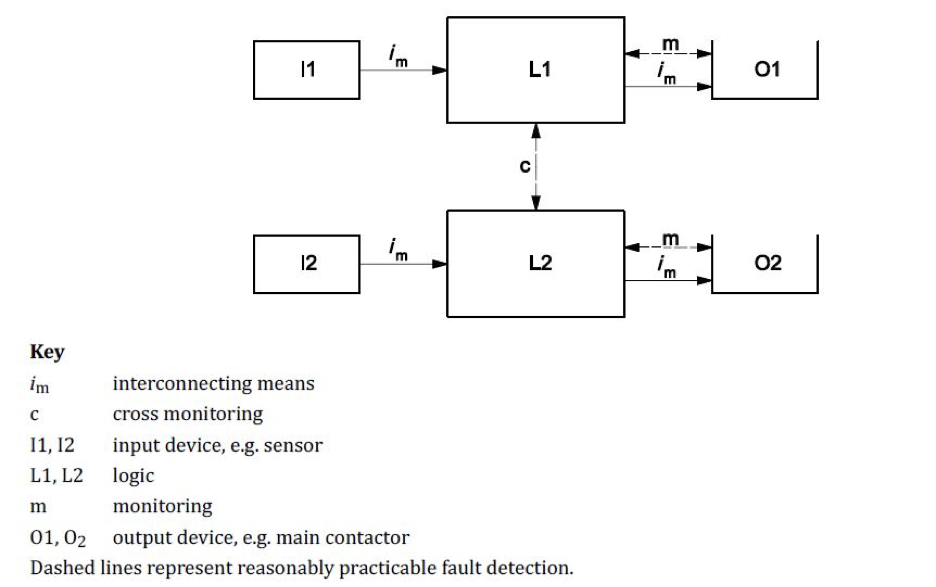Safety Related Part of the Control System
(SRP/CS)

All machines must be risk assessed and evaluated for safe operation. Safe operation must be maintained without the input of the operator (In most cases). The control system achieves the intent, providing it has been designed correctly (Engineering Control). Potential injury determines the performance level the safety system must achieve. The international standard that defines safety systems is;
ISO 13949-1 (EN13849-1:2015) Safety of machinery - Safety-related parts of control systems - Part 1: General principles for design
Requirements of Safety Related Part of the Control System is misunderstood by many electrical design engineers. Selection of the correct components, coupled with the appropriate architecture of the circuit, will determine compliance with the requirements. Verification of the circuit is mandatory, along with the validation specified by ISO 138(Category 3 design is a very safe circuit architecture)

ISO 13849-1 is a complex standard that defines many parameters of safety components. The information given by component manufacturers can be misleading. The most common error is the use of totally inadequate components that do not give the required assurance of safety.
Detailed understanding is not required to design a compliant circuit. Basic understanding of the injury risk, correct component selection, and circuit architecture will result in a compliant circuit design.
It is difficult to deal with the functional safety circuit without an awareness of the guarding requirements (ISO 13857). A combination of the two will result in a safe machine that will not injure the operators.
